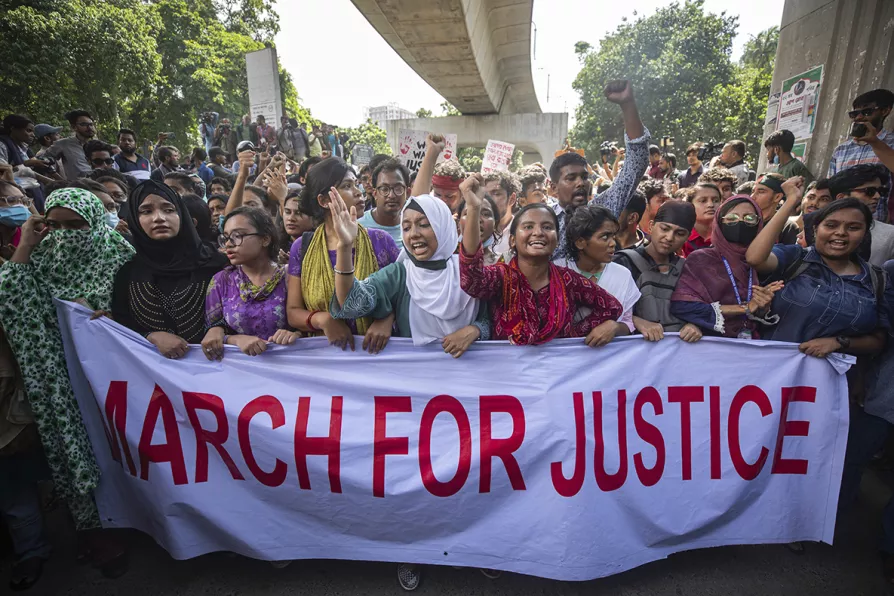SOLOMON HUGHES examines the shift in Labour rhetoric on racism and Reform UK – and what’s driving it
Bangladesh at a crossroads: the aftermath of a people's revolution
As an interim government takes shape, MOSHFIQUR NOOR examines the challenges ahead and the delicate balance between rapid reform and political stability, in the first of a three-part series

 University students shout slogans during a protest to demand justice for the victims killed in the recent countrywide deadly clashes and ask for their campuses to be opened, in Dhaka, Bangladesh, July 31, 2024
University students shout slogans during a protest to demand justice for the victims killed in the recent countrywide deadly clashes and ask for their campuses to be opened, in Dhaka, Bangladesh, July 31, 2024
THE extraordinary rapidity with which a student revolt around the issue of quotas for jobs has morphed into a mass uprising of millions and toppled the authoritarian regime of Sheikh Hasina and the ruling Awami League of nearly 16 years has taken everybody by surprise.
Even the student leaders did not expect such a turn of events. What then turned a seemingly technical issue of jobs into a political earthquake that has seen the prime minister scurrying to board a military aircraft and flee the country?
The move from protests on employment issues to a mass upsurge, from July 14 to August 5 — a mere three weeks — was triggered by an answer that Hasina gave in reply to a journalist on the quota movement.
Similar stories














